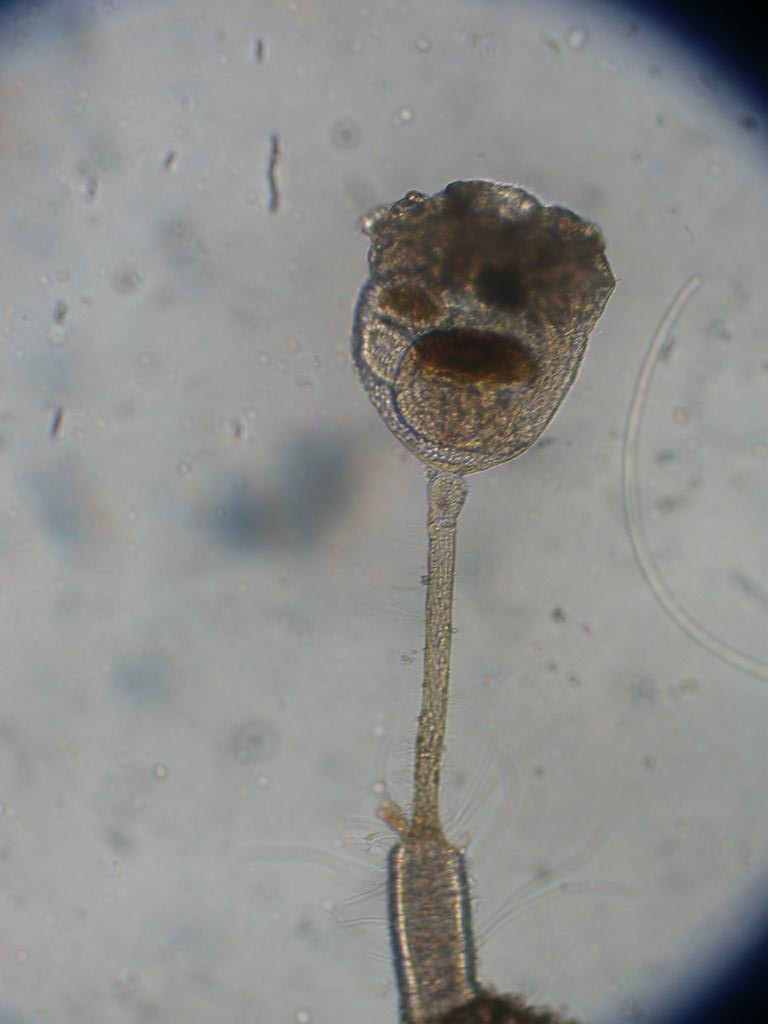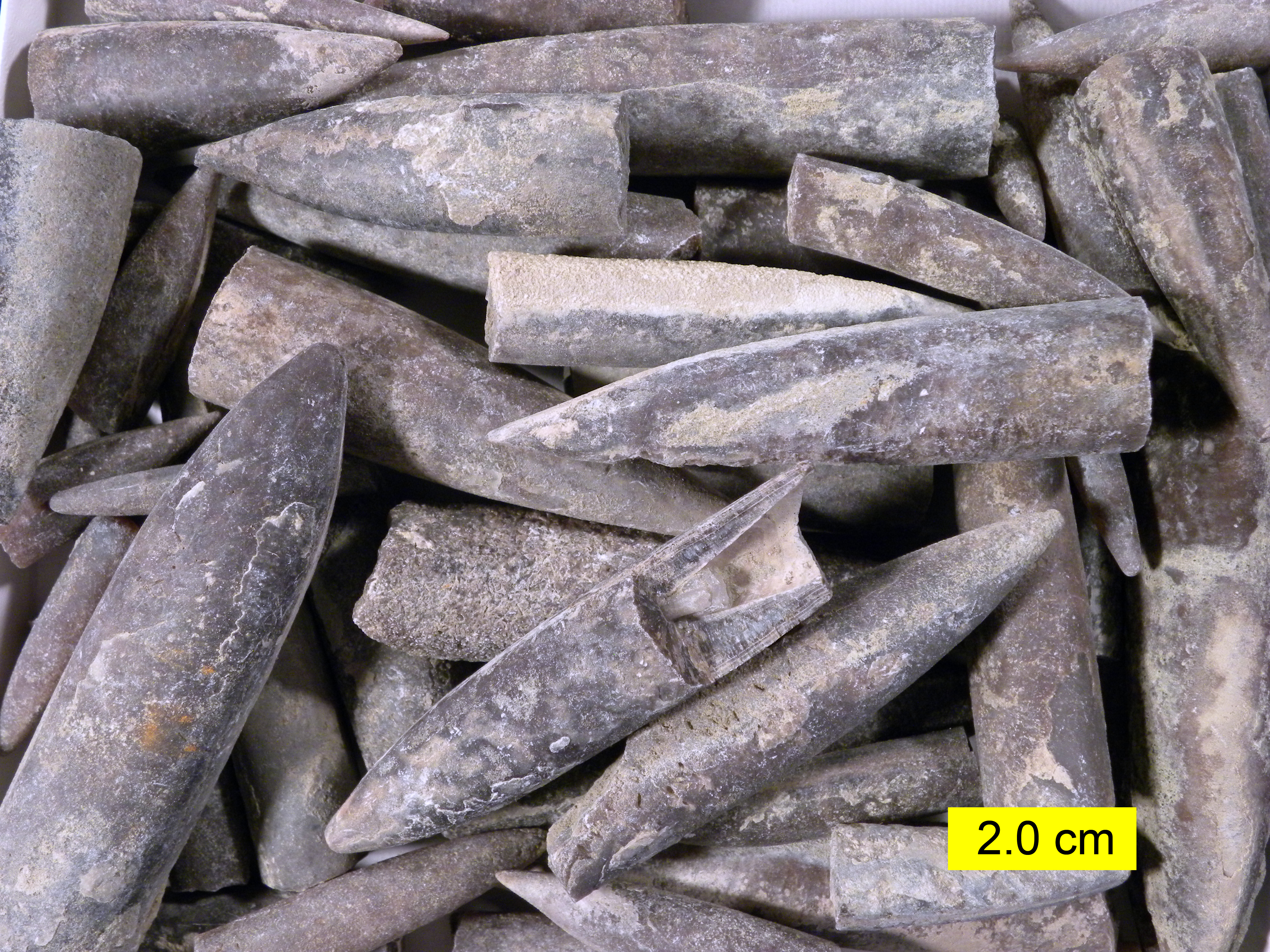|
Bryozoa
Bryozoa (also known as the Polyzoa, Ectoprocta or commonly as moss animals) are a phylum of simple, aquatic invertebrate animals, nearly all living in sedentary colonies. Typically about long, they have a special feeding structure called a lophophore, a "crown" of tentacles used for filter feeding. Most marine bryozoans live in tropical waters, but a few are found in oceanic trenches and polar waters. The bryozoans are classified as the marine bryozoans (Stenolaemata), freshwater bryozoans (Phylactolaemata), and mostly-marine bryozoans (Gymnolaemata), a few members of which prefer brackish water. 5,869living species are known. At least two genera are solitary (''Aethozooides'' and '' Monobryozoon''); the rest are colonial. The terms Polyzoa and Bryozoa were introduced in 1830 and 1831, respectively. Soon after it was named, another group of animals was discovered whose filtering mechanism looked similar, so it was included in Bryozoa until 1869, when the two groups ... [...More Info...] [...Related Items...] OR: [Wikipedia] [Google] [Baidu] |
Phylactolaemata
Phylactolaemata is a class of the phylum Bryozoa whose members live only in freshwater environments. Like all bryozoans, they filter feed by means of an extensible "crown" of ciliated tentacles called a lophophore, and like nearly all bryozoans (the only known exception being Monobryozoon), they live in colonies, each of which consists of clones of the founding member. Unlike those of some marine bryozoans, phylactolaemate colonies consist of only one type of zooid, the feeding forms known as autozooids. These are supported by an unmineralized "exoskeleton" made of gelatinous material or protein, secreted by the zooids. The class contains only one extant order, Plumatellida. Fossil record Phylactolaemata is regarded to have been the earliest group of bryozoans to evolve. However, because they did not have calcified skeletons, these early bryozoans would have had very low potential to fossilize. Fossils of phylactolaemate statoblasts, which consist of protective chitinous shell ... [...More Info...] [...Related Items...] OR: [Wikipedia] [Google] [Baidu] |
Entoprocta
Entoprocta (), or Kamptozoa , is a phylum of mostly sessile aquatic animals, ranging from long. Mature individuals are goblet-shaped, on relatively long stalks. They have a "crown" of solid tentacles whose cilia generate water currents that draw food particles towards the mouth, and both the mouth and anus lie inside the "crown". The superficially similar Bryozoa (Ectoprocta) have the anus outside a "crown" of hollow tentacles. Most families of entoprocts are colonial, and all but 2 of the 150 species are marine. A few solitary species can move slowly. Some species eject unfertilized ova into the water, while others keep their ova in brood chambers until they hatch, and some of these species use placenta-like organs to nourish the developing eggs. After hatching, the larvae swim for a short time and then settle on a surface. There they metamorphose, and the larval gut rotates by up to 180°, so that the mouth and anus face upwards. Both colonial and solitary species ... [...More Info...] [...Related Items...] OR: [Wikipedia] [Google] [Baidu] |
Cheilostomata
Cheilostomatida, also called Cheilostomata, is an order of Bryozoa in the class Gymnolaemata. They are exclusively marine, colonial invertebrate animals. Cheilostome colonies are composed of calcium carbonate and grow on a variety of surfaces, including rocks, shells, seagrass and kelps. The colony shapes range from simple encrusting sheets to erect branching and even unattached forms. As in other bryozoan groups, each colony is composed of a few to thousands of individual polypides. Each individual has a U-shaped gut, and no respiratory, circulatory, or nerve system. Unique among bryozoans, cheilostome polypides are housed in a box-shaped zooids, which do not grow larger once the zooid is mature. The opening through which the polypide protrudes is protected by a calcareous or chitinous lidlike structure, an operculum. Cheilostomes possess avicularia, which have modified the operculum into a range of mandibles (possibly for defense) or hair-like setae (possibly for cleaning) ... [...More Info...] [...Related Items...] OR: [Wikipedia] [Google] [Baidu] |
Pywackia
''Pywackia'' is a contentious Cambrian fossil that has been interpreted as the earliest ( total group) Bryozoan, and the only representative of that phylum In biology, a phylum (; plural: phyla) is a level of classification or taxonomic rank below kingdom and above class. Traditionally, in botany the term division has been used instead of phylum, although the International Code of Nomenclatu ... in the Cambrian period. Its Bryozoan credentials have been called into question, but the octocoral alternative is equally unconvincing, and there are reasons to suggest a position in the Stenolaemata stem lineage. References {{Taxonbar, from=Q20817953 Fossils of Mexico Enigmatic prehistoric animal genera Cambrian invertebrates Cambrian fossil record Fossil taxa described in 2010 Cambrian genus extinctions ... [...More Info...] [...Related Items...] OR: [Wikipedia] [Google] [Baidu] |
Stenolaemata
Stenolaemata are a class of exclusively marine bryozoans. Stenolaemates originated and diversified in the Ordovician, and more than 600 species are still alive today.Stenolaemata. The Digital Atlas of Ordovician Life. All extant (living) species are in the order , the third-largest order of living bryozoans.Ramalho, L. V., G. Muricy, and P. D. Taylor. (2009) Cyclostomata (Bryozoa, Stenolaemata) from Rio de Janeiro State, Brazil. ''Zootaxa'' 2057 32-52. These animals are stationary [...More Info...] [...Related Items...] OR: [Wikipedia] [Google] [Baidu] |
Lophophore
The lophophore () is a characteristic feeding organ possessed by four major groups of animals: the Brachiopoda, Bryozoa, Hyolitha, and Phoronida, which collectively constitute the protostome group Lophophorata.Introduction to the Lophotrochozoa – Retrieved 3 May 2010 All lophophores are found in aquatic organisms. Etymology ''Lophophore'' is derived from the Greek ''lophos'' (crest, tuft) and ''-phore'', ''-phoros'' (φορος) (bearing), a derivative of ''phérein'' (φέρειν) (to bear); thus crest-bearing.Characteristics The lophophore can most easily be described as a ring of ciliated tentacles surrounding the mouth, but it is often horseshoe-shaped or coiled. Phoronids have th ...[...More Info...] [...Related Items...] OR: [Wikipedia] [Google] [Baidu] |
Kunstformen Der Natur
(known in English as ''Art Forms in Nature'') is a book of lithographic and halftone prints by German biologist Ernst Haeckel. Publication Originally published in sets of ten between 1899 and 1904 and collectively in two volumes in 1904, it consists of 100 prints of various organisms, many of which were first described by Haeckel himself. Over the course of his career, over 1000 engravings were produced based on Haeckel's sketches and watercolors; many of the best of these were chosen for , translated from sketch to print by lithographer Adolf Giltsch. A second edition of , containing only 30 prints, was produced in 1914. Themes According to Haeckel scholar Olaf Breidbach, the work was "not just a book of illustrations but also the summation of his view of the world." The over-riding themes of the plates are symmetry and leve ... [...More Info...] [...Related Items...] OR: [Wikipedia] [Google] [Baidu] |
Polypide
The polypide in bryozoans encompasses most of the organs and tissues of each individual zooid A zooid or zoöid is a single animal that is part of a colonial animal. This lifestyle has been adopted by animals from separate unrelated taxa. Zooids are multicellular; their structure is similar to that of other solitary animals. The zooid .... This includes the tentacles, tentacle sheath, U-shaped digestive tract, musculature and nerve cells. It is housed in the zooidal exoskeleton, which in cyclostomes is tubular and in cheilostomes is box-shaped. See also Bryozoan Anatomy References Bryozoology Protostome anatomy {{bryozoan-stub ... [...More Info...] [...Related Items...] OR: [Wikipedia] [Google] [Baidu] |
Zooid
A zooid or zoöid is a single animal that is part of a colonial animal. This lifestyle has been adopted by animals from separate unrelated taxa. Zooids are multicellular; their structure is similar to that of other solitary animals. The zooids can either be directly connected by tissue (e.g. corals, Catenulida, Siphonophorae, Pyrosome or Ectoprocta) or share a common exoskeleton (e.g. Bryozoa or Pterobranchia). The colonial organism as a whole is called a ''zoon'' , plural ''zoa'' (from Ancient Greek meaning animal; plural , ). Zooids can exhibit polymorphism. For instance, extant bryozoans may have zooids adapted for different functions, such as feeding, anchoring the colony to the substratum and for brooding embryos. However, fossil bryozoans are only known by the colony structures that the zooids formed during life. There are correlations between the size of some zooids and temperature. Variations in zooid size within colonies of fossils can be used as an indicator of ... [...More Info...] [...Related Items...] OR: [Wikipedia] [Google] [Baidu] |
Gymnolaemata
Gymnolaemata are a class of Bryozoans. Gymnolaemata are sessile, mostly marine organisms and grow on the surfaces of rocks, kelp, and in some cases on animals, like fish. Zooids are cylindrical or flattened. The lophophore is protruded by action of muscles pulling on the frontal wall. This order includes the majority of living bryozoan species. Orders * Cheilostomata Busk, 1852 * Ctenostomatida The Ctenostomatida are an order of bryozoans in the class Gymnolaemata. The great majority of ctenostome species are marine, although '' Paludicella'' inhabits freshwater. They are distinguished from their close relatives, the cheilostomes, by ... Busk, 1852 External links * * References Protostome classes {{Bryozoan-stub ... [...More Info...] [...Related Items...] OR: [Wikipedia] [Google] [Baidu] |
Exoskeleton
An exoskeleton (from Greek ''éxō'' "outer" and ''skeletós'' "skeleton") is an external skeleton that supports and protects an animal's body, in contrast to an internal skeleton ( endoskeleton) in for example, a human. In usage, some of the larger kinds of exoskeletons are known as " shells". Examples of exoskeletons within animals include the arthropod exoskeleton shared by chelicerates, myriapods, crustaceans, and insects, as well as the shell of certain sponges and the mollusc shell shared by snails, clams, tusk shells, chitons and nautilus. Some animals, such as the turtle, have both an endoskeleton and an exoskeleton. Role Exoskeletons contain rigid and resistant components that fulfill a set of functional roles in many animals including protection, excretion, sensing, support, feeding and acting as a barrier against desiccation in terrestrial organisms. Exoskeletons have a role in defense from pests and predators, support and in providing an attachment framewo ... [...More Info...] [...Related Items...] OR: [Wikipedia] [Google] [Baidu] |
Biomineralization
Biomineralization, also written biomineralisation, is the process by which living organisms produce minerals, often to harden or stiffen existing tissues. Such tissues are called mineralized tissues. It is an extremely widespread phenomenon; all six taxonomic kingdoms contain members that are able to form minerals, and over 60 different minerals have been identified in organisms. Examples include silicates in algae and diatoms, carbonates in invertebrates, and calcium phosphates and carbonates in vertebrates. These minerals often form structural features such as sea shells and the bone in mammals and birds. Organisms have been producing mineralized skeletons for the past 550 million years. Calcium carbonates and calcium phosphates are usually crystalline, but silica organisms (sponges, diatoms...) are always non crystalline minerals. Other examples include copper, iron and gold deposits involving bacteria. Biologically formed minerals often have special uses such as magnetic ... [...More Info...] [...Related Items...] OR: [Wikipedia] [Google] [Baidu] |

_05.jpg)


